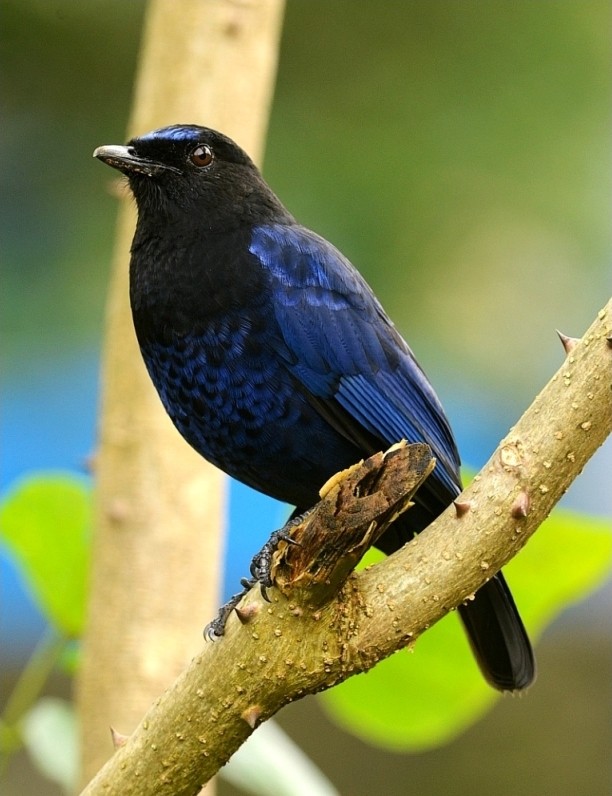Malabar Whistling Thrush
A species of Whistling thrushes Scientific name : Myophonus horsfieldii Genus : Whistling thrushes
Malabar Whistling Thrush, A species of Whistling thrushes
Botanical name: Myophonus horsfieldii
Genus: Whistling thrushes
Content
Description General Info
 Photo By Chandru0072 , used under CC-BY-SA-3.0 /Cropped and compressed from original
Photo By Chandru0072 , used under CC-BY-SA-3.0 /Cropped and compressed from original Description
This large thrush appears blackish with shiny patches of blue on the forehead and shoulders. The blue becomes visible only in oblique lighting. The bill and legs are black. The sexes are indistinguishable and juveniles are more brownish and lack the blue forehead. 
Size
30 cm
Nest Placement
Cliff
Feeding Habits
Malabar Whistling Thrush primarily consumes aquatic insects, snails, and crabs, and occasionally eats berries. Malabar Whistling Thrush typically forages on the ground and is also adept at perching in trees while feeding.
Habitat
Malabar Whistling Thrush typically inhabits the lush undergrowth and dense riverine forests along hill streams and rivers within broader forested uplands, secondary growths, and plantations. These birds favor environments with rocky terrains featuring overhanging outcrops and caves but may also wander into open areas nearby. They are generally found in regions with varying elevations, from foothills up to 2200 meters, and sometimes descend to plains during the rainy season. They are resident birds with tendencies to disperse over wider areas in the winter season.
Dite type
Omnivorous
General Info
Feeding Habits
Bird food type
Behavior
The species is omnivorous, eating a wide range of insects, crabs, frogs, earthworms and berries. They are usually seen singly or in pairs. This is a bold species and is often found close to human habitation. The male sings its varied and melodious whistling song from trees during summer. They may sing for a long time around dawn but at other times of the day they often utter sharp single or two note whistles. They were once popular as cage birds, with the ability to learn entire tunes. They bathe frequently in water usually in the mornings and evenings but at midday during hot weather. 
Distribution Area
The species is found all along the Western Ghats south of the Surat Dangs. They are also found along the Satpura range to northwestern Orissa (Surguja). Also locally in the Eastern Ghats. Populations are not migratory but have been known to disperse widely in winter. An individual that was ringed in Mahabaleshwar in the summer of 1972 was recovered in the winter of 1976 in Sampaje, Coorg. Although historically recorded twice from Mount Abu, more recent surveys have not recorded the bird or suitable habitat. Malabar whistling thrushes are usually found in dark undergrowth and dense riverine forest. 
Species Status
Not globally threatened.
Scientific Classification
Phylum
Chordates Class
Birds Order
Perching birds Family
Old world flycatchers Genus
Whistling thrushes Species
Malabar Whistling Thrush